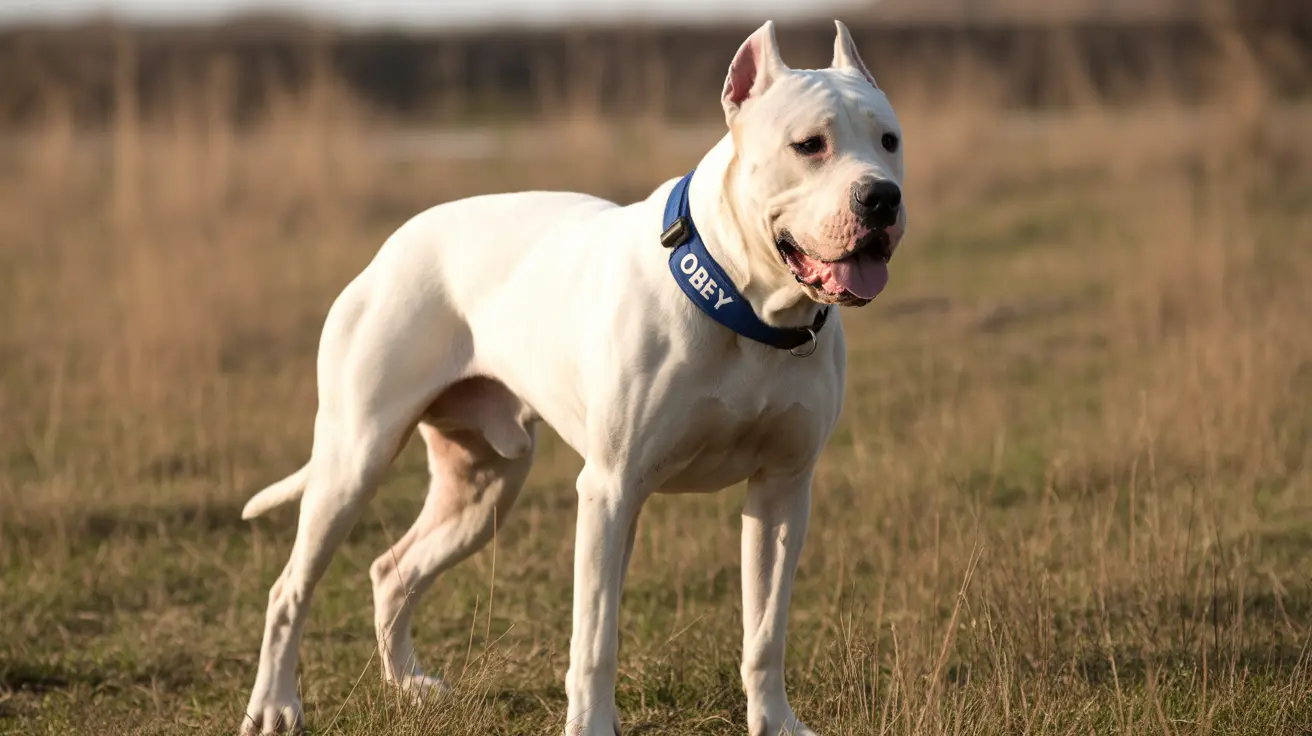Introduction
The Dogo Argentino, a muscular and imposing breed developed for big-game hunting, possesses one of the most formidable bite forces among domestic dog breeds. With an estimated bite force of 500 PSI (pounds per square inch), these powerful dogs rank among the top contenders when it comes to jaw strength, surpassing many other well-known strong breeds like German Shepherds and Rottweilers.
Understanding the Dogo Argentino's bite force is crucial for potential owners, breeders, and anyone working with these impressive animals. This comprehensive guide explores their jaw strength, its practical applications, and the implications for training and ownership.
The Science Behind Dogo Argentino's Bite Force
The Dogo Argentino's impressive bite force of 500 PSI is a result of several physical characteristics. Their broad skull, powerful jaw muscles, and robust bone structure contribute to their ability to exert significant pressure when biting. This force is particularly noteworthy when compared to other domestic breeds - it's more than twice the bite force of a Pit Bull (235-242 PSI) and significantly higher than a German Shepherd (238-360 PSI).
This remarkable jaw strength isn't just for show - it evolved from the breed's original purpose as a big-game hunter, specifically designed to hold down dangerous prey like wild boars and pumas until hunters could arrive.
Historical Context and Breeding Purpose
Developed in Argentina during the early 20th century, the Dogo Argentino was specifically bred for hunting large, dangerous game. Dr. Antonio Nores Martinez, the breed's creator, crossed the now-extinct Cordoba Fighting Dog with several other breeds, including mastiffs and bulldogs, to create a powerful hunter with exceptional physical capabilities.
The resulting breed needed not only courage and stamina but also the jaw strength to hold onto formidable prey. This breeding history directly contributed to the development of their powerful bite force.
Practical Applications and Working Roles
Today, the Dogo Argentino's powerful bite force serves various practical purposes beyond hunting. These dogs excel in:
- Search and rescue operations
- Police and military work
- Protection and guard dog duties
- Competitive sports and obedience training
Their combination of strength, intelligence, and trainability makes them valuable working dogs in scenarios where physical power and control are essential.
Training and Safety Considerations
While the Dogo Argentino's bite force is impressive, it also necessitates responsible ownership and proper training. Early socialization and consistent training are crucial for developing well-adjusted dogs that can safely interact with families and other pets.
Owners should focus on:
- Early socialization with people and other animals
- Positive reinforcement training methods
- Establishing clear leadership and boundaries
- Regular exercise and mental stimulation
- Professional training guidance when needed
Frequently Asked Questions
How strong is the bite force of a Dogo Argentino compared to other dog breeds?
The Dogo Argentino's bite force of approximately 500 PSI places it among the top domestic dog breeds in terms of jaw strength. This is significantly higher than common breeds like Pit Bulls (235-242 PSI) and German Shepherds (238-360 PSI), though some breeds like the Kangal (743 PSI) and Cane Corso (700 PSI) have stronger recorded bite forces.
What factors contribute to the Dogo Argentino's powerful bite force of around 500 PSI?
The breed's powerful bite force results from its broad skull structure, strong jaw muscles, robust bone structure, and genetic heritage as a big-game hunting dog. Physical characteristics combined with their breeding purpose have created a dog with exceptional jaw strength.
Why was the Dogo Argentino originally bred, and how does its bite force relate to its hunting abilities?
The Dogo Argentino was specifically bred for hunting large game like wild boars and pumas in Argentina. Their powerful bite force was essential for holding down dangerous prey until hunters could arrive, making it a crucial characteristic for their intended purpose.
What safety precautions and training are recommended for managing a Dogo Argentino's bite strength?
Essential safety measures include early socialization, consistent professional training, establishing clear boundaries, and proper supervision. Owners should invest in positive reinforcement training methods and ensure their dog receives adequate physical and mental stimulation.
How does the Dogo Argentino's bite force affect its suitability as a family pet and working dog?
While their strong bite force makes them excellent working dogs, it also means they require experienced handling and careful training to be suitable family pets. With proper socialization and training, they can be loyal and gentle companions while maintaining their effectiveness in working roles.
Conclusion
The Dogo Argentino's impressive bite force of 500 PSI is a testament to their breeding history and physical capabilities. While this strength makes them exceptional working dogs, it also emphasizes the importance of responsible ownership, proper training, and careful management. Understanding and respecting their power is key to safely harnessing their potential as both working dogs and family companions.






